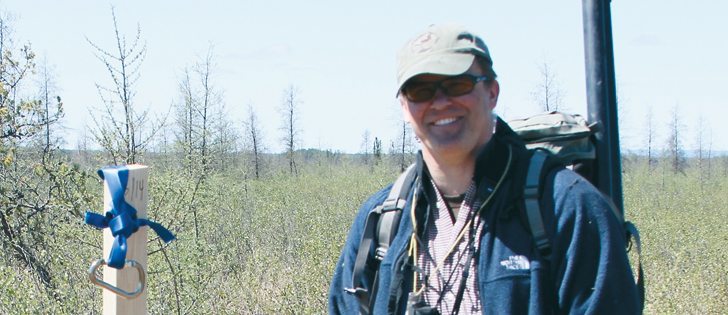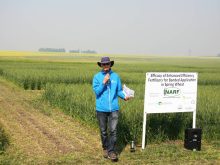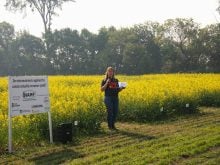Researcher plants hundreds of microphones to eavesdrop on animal activity and other interactions in the environment
An Alberta researcher is listening for climate change.
However, instead of standing beside a field in the hopes of seeing and hearing a bird, Erin Bayne has mounted hundreds of computerized microphones around Alberta to listen to wildlife year round.
“There are all kinds of animals that make sounds at all times of the year. Some sing only at night, some sing in the morning, and people can’t be there all the time,” said Bayne, associate professor in biological sciences at the University of Alberta.
Read Also

Sustainable food has ‘lost all meaning’: prof
That marketing strategy is deader than a doornail, says a University of Guelph professor who specializes in consumer preferences and perceptions of agriculture and food.
“We’re able to find a lot more animals than a human would. When a human goes there, they’re there for a short period of time. The animal might call when they’re there, it might not. The animal might be scared of the person. With the box, we’re able to find a lot more species in a lot more places.”
Bayne hopes the bioacoustics technology will provide a better understanding of the numbers of birds, amphibians and mammals in Alberta, their behaviour and their response to development and climate change in the province.
The research started five years ago when Bayne was helping the mining industry find a way to monitor the yellow rail, an elusive bird that sings at night and lives in marshy fens.
“They basically only sang at midnight and they sang in one of the most difficult place to get to in all of Alberta,” he said. “It was very difficult for people to do that kind of work, and we were looking for a technological solution.”
The monitoring technology allowed researchers to confirm the yellow rail at four times as many locations as originally believed, and they now know more about how the bird interacts with its environment.
Bayne’s recorders are now set up at 400 locations to establish when birds arrive in an area, when amphibians are calling, when owls start to breed and other animal activity.
“In the past if a person hadn’t been there on that day, they wouldn’t have learned that,” he said.
“Now we can establish where the animal is singing relative to an industrial site or relative to a pipeline or a road.”
The research will continue to find ways to program computers to identify sounds and sift through the thousands of hours of data collected by the recorders.
“Computers can actually go through it quite quickly,” he said.
“What we’re doing right now is trying to teach computers what birds and amphibians and animals sounds like.”
Computers are good at identifying isolated species that sing distinctly, but they are challenged when many species are singing over top of each other. Wind and sounds that are far from the recorder also cause problems.
“The problem is dealing with the variabilities in natural systems. We’re making a lot of progress.”
Researchers will also gather data on how animals change in response to human development, agriculture, forestry, energy and climate.
Last year, recorders were placed on 400 locations over one-fifth of the province. The locations will be changed each year until the entire province is covered.
The recorders will then return to their original locations, which will help establish long-term population trends.
“The key is with population trends, we can be really certain now,” Bayne said. “It is not like when a human went out and was there for 10 minutes.”

















